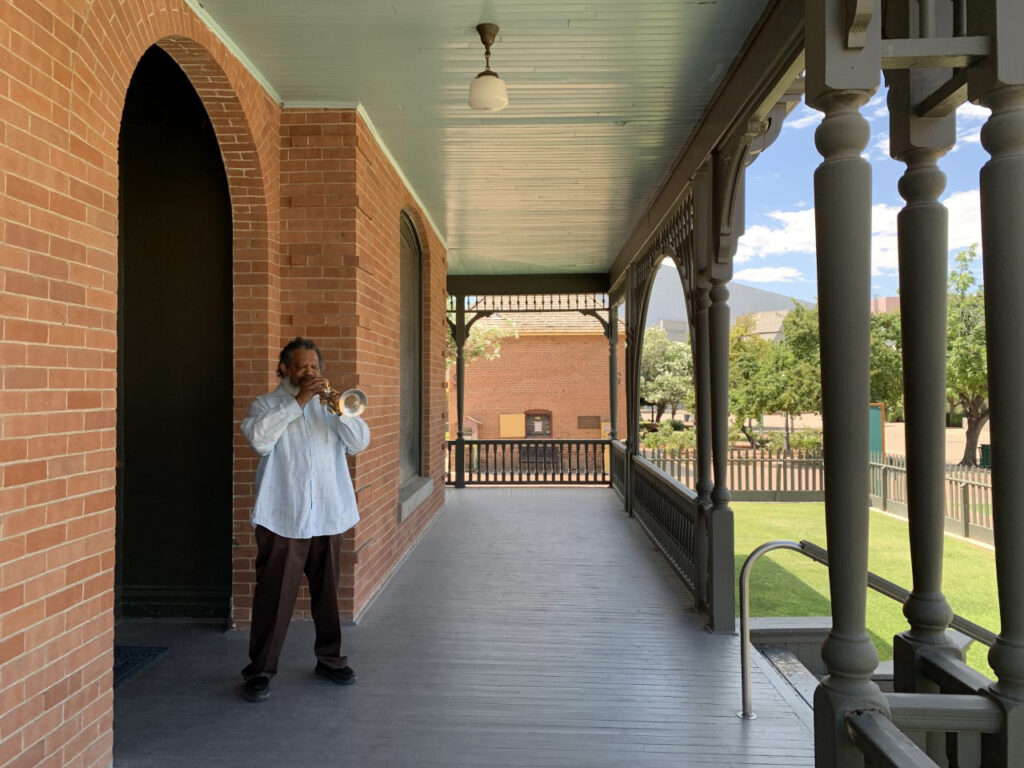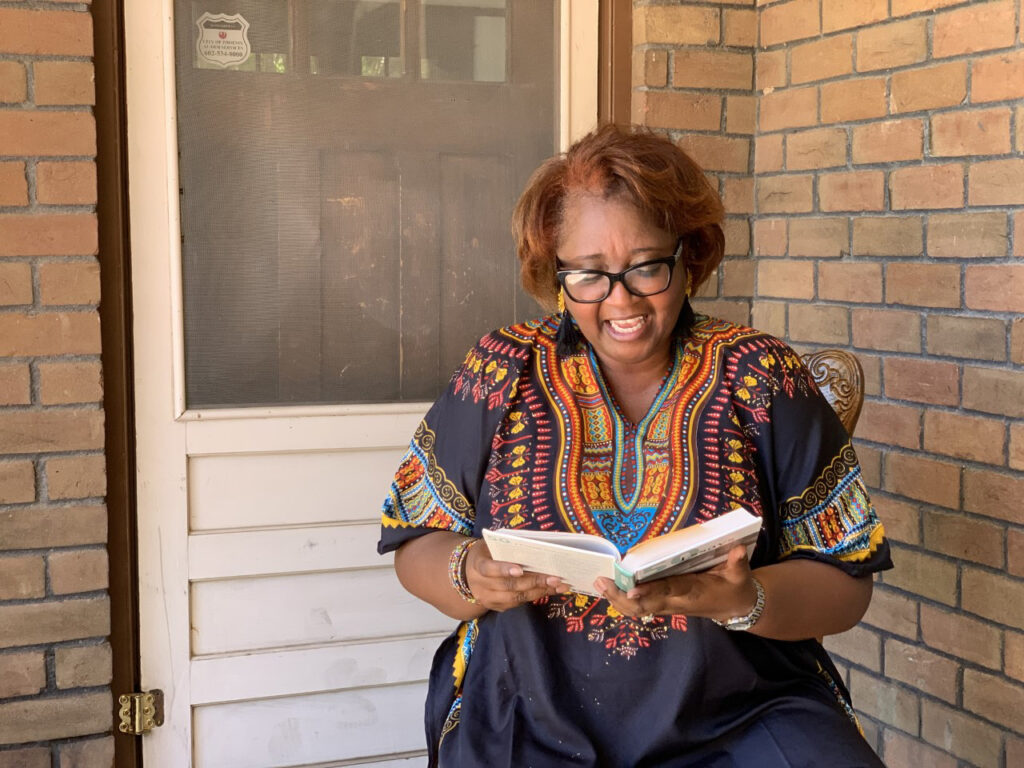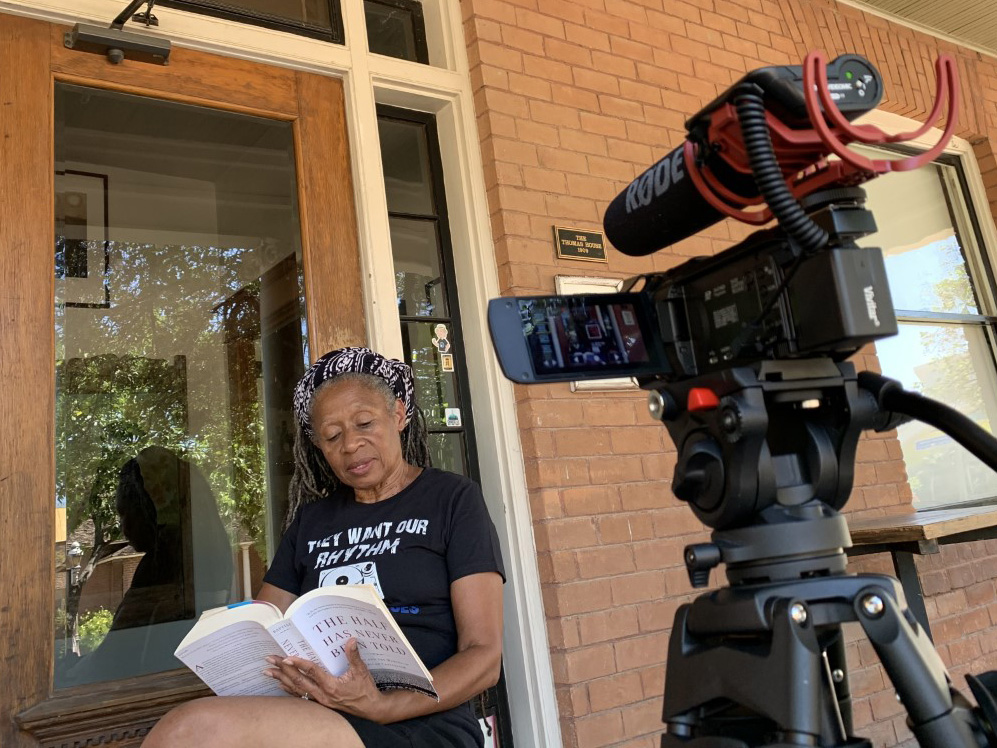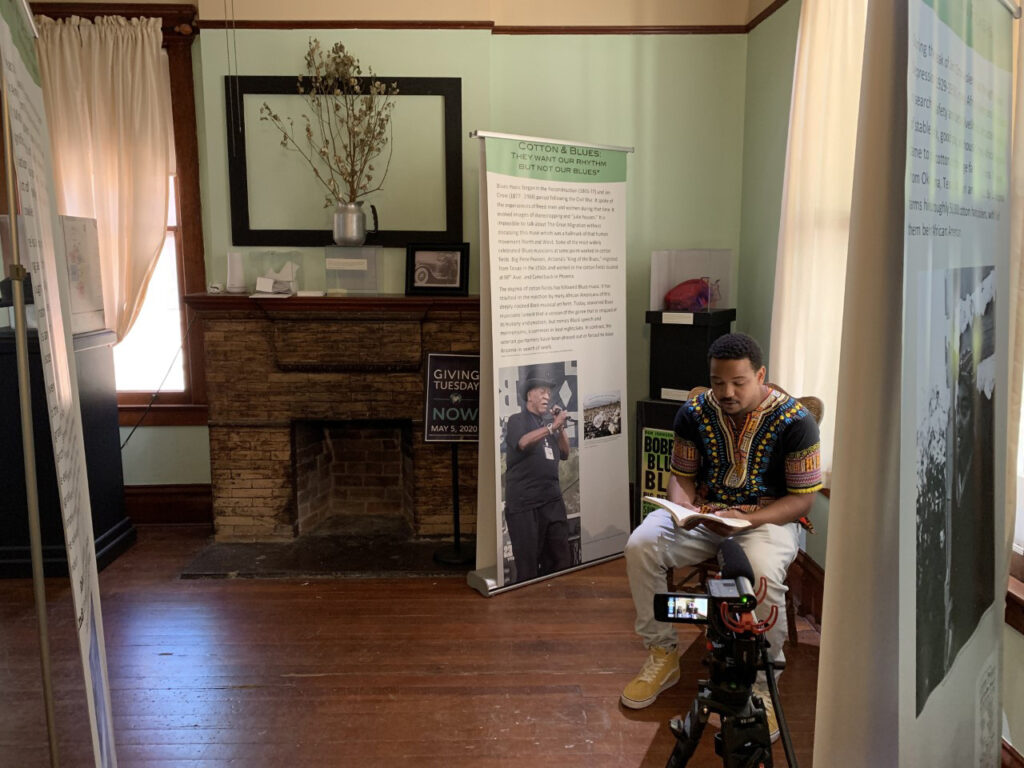
The 24th Annual Emancipation Marathon — A Literary Tradition
Friday, June 19 – Sunday, June 21, 2020
There is no national recognition of the victims of American Chattel Slavery. The Emancipation Marathon is an annual literary marathon, which was established in 1997 and continues to present day.
During The Emancipation Marathon, volunteers read aloud about “that peculiar institution,” American Chattel Slavery, in honor of those African victims. The structure of The Emancipation Marathon reading selections adhere to the following four themes within in the context of American Chattel Slavery:
Slavery: the definition
Slavery: the law
Slavery: the human condition
Slavery: the legacy
Due to the COVID-19 pandemic, readings for The Emancipation Marathon were recorded and will be published throughout the weekend, from June 19–21, on the Facebook page of Emancipation Arts LLC as well as the Center’s YouTube channel.
Scottsdale Center for the Performing Arts is humbled to be a part of the production of The Emancipation Marathon this year—in partnership with Emancipation Arts, The Heritage Square Foundation, Local First Arizona, and the Virginia G. Piper Center for Creative Writing—to commemorate the Emancipation from slavery in America, recognized nationally on Juneteenth (June 19).

This year’s readings were extracted from the following:
- Borderland Chronicles No. 23 by Cindy Hayostek, 2013 (Excerpt: “Fairfax W. Burnside Fights Segregation in the Douglas Schools System”) — read by Kari Carlisle, executive director, Heritage Square
- Slavery Defended: The Views of the Old South, 1963 (Excerpt: “Cotton is King” by David Christy) — read by Diandra Adamczyk, senior programming coordinator, Scottsdale Center for the Performing Arts
- How Mass Produced and Widely Distributed Images Helped the Abolitionist Movement by Frank H. Goodyear, III (Excerpt: “The Scourged Back: How Runaway Slave and Soldier Private Gordon Changed History”) — ready by Rashaad Thomas, poet
- “The Slaver” from John Brown’s Body by Stephen Vincent Benet, 1927 (Excerpt: “Prelude”) — read by Greg Esser, vice president, Roosevelt Row Corp.
- Africans in America by Charles Johnson, Patricia Smith, and the WGBH Series Research Team (Excerpt: “Martha’s Dilemma”) — read by Jennifer Hance, director of education, Heritage Square
- The African American Experience in Tempe by Jared Smith, 2010 (Excerpt: Chapters 2 and 3) — read by Nicole Underwood, author
- We Are Who We Say We Are: A Black Family’s Search Home Across the Atlantic World by Mary Frances Berry, 2015 (Excerpt: “Becoming Colored Creole”) — read by Miguel Monzon, curator, Modified Arts
- Sons of Mississippi by Paul Hendrickson, 2003 (Excerpt: “Grimsley”) — read by Scotty Spenner, musician
- The Slave Trade by Hugh Thomas, 1997 (Excerpt: “Sharks Are the Invariable Outriders of All Slave Ships”) — read by Ahmad Daniels, author
- “How Native American Slaveholders Complicate the Trail of Tears Narrative” by Ryan P. Smith (Smithsonian magazine, 2018) — read by Neal Lester, professor of English literature
- 50 Essays: A Portable Anthology, 2004 (Excerpt: “Aren’t I A Woman?” by Sojourner Truth) — read by Sharla Johnson, minister (who also performed an a cappella rendition of “Lift Every Voice and Sing”)
- A Wreath for Emmet Till by Marilyn Nelson, 2005 (Excerpt: “Forget him not. Though if I could, I would.”) — read by Gabriel Bey, musician (who also performed “Lift Every Voice and Sing” on trumpet)
- Organized Labor & The Black Worker (Excerpt: Chapter 1 from “Slavery to Freedom”) — read by Julie Petersen, playwright
- The Battle of Negro Fort: The Rise and Fall of a Fugitive Slave Community, Matthew J. Clavin, 2019 (Excerpt: “The British Post on Prospect Bluff”) — read by Matt Herman, healthcare professional
- American Slavery 1619–1877 by Peter Kolchin, 2003 (Chapter 4) — read by Keith Johnson, musician (who also performed “Lift Every Voice and Sing” on steel drum)
- Not All Okies Are White | The Fabric of Black Life by Geta LeSeur, 2000 (Excerpt: pp. 97–102) — read by Jason Landrum Jr., health insurance professional
- The Devaluation of Assets in Black Neighborhoods | The Case for Residential Property by Andre Perry, Jonathan Rothwell, David Harshbarger, 2019 — read by Matthew Aguilar, director of events, Heritage Square
- White Fragility by Robin Diangelo, 2018 (Excerpt: “The Challenges of Talking to White People About Racism”) — read by Brian Passey, senior communications specialist, Scottsdale Arts
- America’s War: Talking About the Civil War and Emancipation on Their 150th Anniversaries, edited by Edward L. Ayers, 2012 (Excerpt: “What to the Slave is the 4th of July” by Frederick Douglas, July 5, 1852) — read by Jason Landrum Sr., truck driver
- The Half Has Never Been Told: Slavery and American Capitalism by Edward Baptist, 2014 (Excerpt: “Left Hand”) — read by Clottee Hammons, creative director, Emancipation Arts
About Emancipation Arts LLC
The Mission of Emancipation Arts is to raise the profile of Black artists and honor our enslaved African ancestors through Arts practices, dissemination of relevant history and egalitarian collaborations.

About Clottee Hammons
Clottee A. Hammons, creative director for Emancipation Arts, grew up in the segregated downtown Phoenix area and is the granddaughter of a 10th Calvary Buffalo Soldier. She views that legacy with pride and a strong sense of social responsibility.
Hammons is an artist, writer, poet, activist, educator, and prevention specialist. She views her special call as a “community builder” and works in grateful collaboration with numerous artists, organizations, and individuals while being conscientious and mindful of honoring her ancestors. Hammons is passionate about literature, history, libraries, and librarians. She is the creator and ongoing facilitator of the Emancipation Marathon—a literary tradition that honors the victims of American Chattel Slavery.
Her essay “Disguised As Nice” was published in Once Upon a Time in a Different World: Issues and Ideas in African American Children’s Literature (Routledge 2007). She has written articles for the Black Voice News, Phoenix Downtown Magazine, The Arizona Informant.
Hammons recently curated and presented two exhibitions in Phoenix: The Great Migration and The Spillover Effect. Read more about these projects here:
- Arizona PBS
Black History Month: “The Great Migration: Indiscernibles in Arizona” - Modified Arts
Emancipation Arts presents: The SpilloverEffect - Phoenix New Times
8 Black Artists to Know in Arizona

The Great Migration included this writing by Hammons:
“In 1993 an elegant Yoruba priest cast bones on the floor of a pawnshop in San Bernardo, California, and read my past and future. He told me to ‘honor my ancestors,’ His advice was a prescription to cultivate peace in my life. In 1993 I also became a grandmother at age 39.
“The thought that I could draw to me peace, success, health or whatever might be my heart’s desire was far outside of how I was accustomed to believing the universe worked. I was taught to pray to a designated hitter in the Holy Trinity or all saints lineup and then ‘roll with the punches.’ I found the idea of not getting punched far more appealing, but I had no idea of how to ‘honor my ancestors,’ or even who they were, for the most part.
“Firsthand knowledge of my ancestors stopped with my great grandmother, Effie Stamps. I could clearly remember that she wore a stocking cap and smoked a tiny pipe. She also kept a solitary cotton plant in our front yard on 11th Street, between Monroe and Washington. A passerby once plucked a tuft of cotton from her plant and kept walking. She looked ancient to me, but she moved swiftly and overtook him and hit him on the back and head until he let go of her cotton. Effie passed through my life as tight lipped as the Sphinx about any of her other relatives.
“The significance of the cotton plant was not lost on me in grammar school, which is where I first heard the words chattel slavery and studied the weary, direct gaze of Dred Scott. The plant had long since been uprooted or had died out, but the soil was always marked by an uneven place. I’d like to believe that cotton plant was Effie’s way of honoring her ancestors, or maybe a secret sign to other pilgrims from Natchez Mississippi, or a warning to unscrupulous white men, ‘Beware, we’re FREE!’”
— Clottee Hammons
Back to Amplify home.
CONNECTIONS: Spark | Immerse | Inspire


